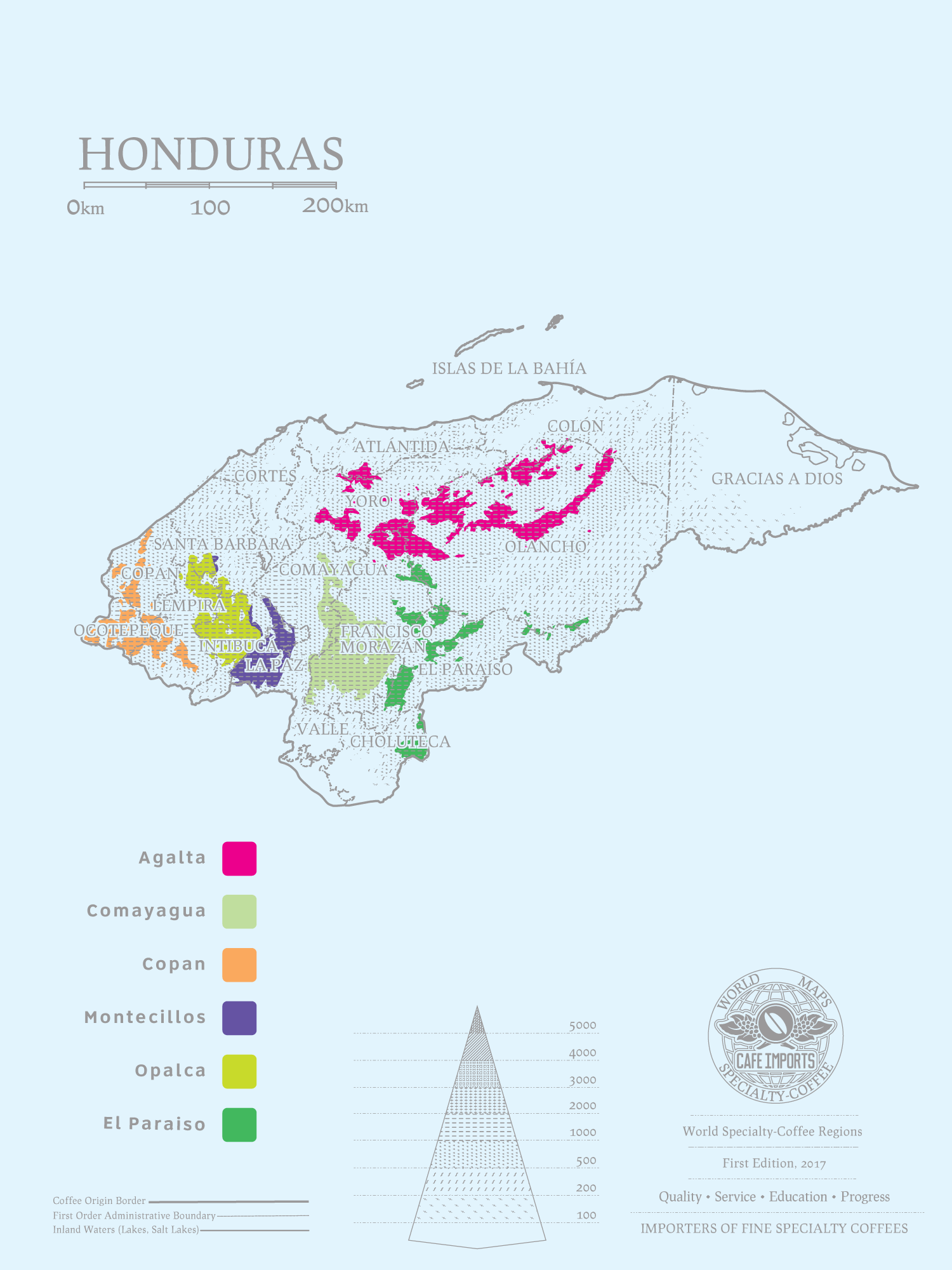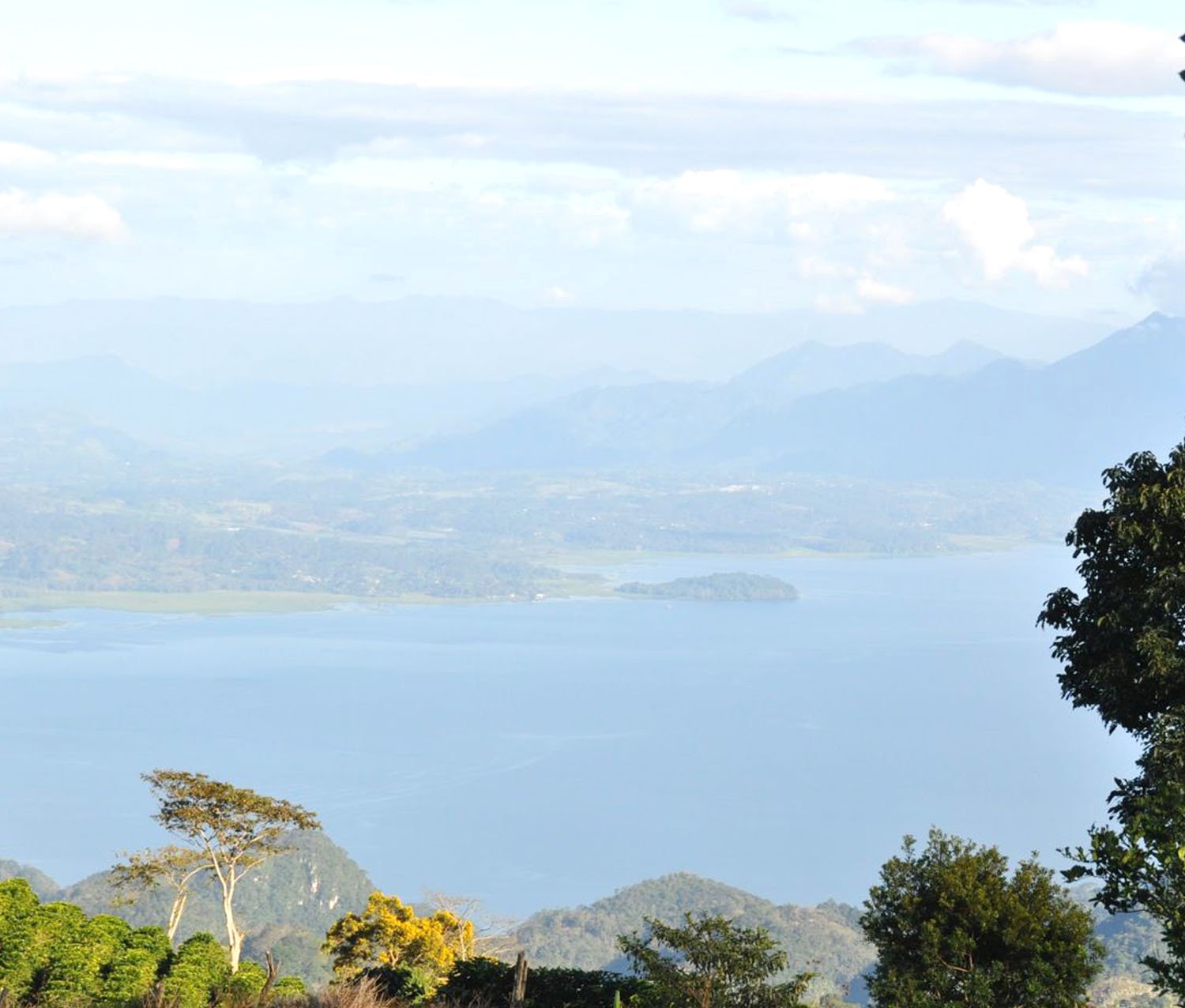CAFE IMPORTS + HONDURAS
For the past several years, Café Imports’s green-buying team has continued to explore relationships in Honduras, searching for just the right combination of microclimate, variety, processing, and attention to detail. We have developed strong relationships with quality-focused cooperatives such as Cooperativa RAOS, a 250-member organization in Marcala, La Paz, from which we have seen some of the most stable results and the highest potential for microlots. We are also exploring another potential microlot-development program in the southwest, near the Salvadoran border.
While Honduran coffees still tend to live up to their reputation as “mild” (nutty, sweet, heavy-bodied but without the oomph of acidity that characterizes a fantastic Guatemalan or the dynamic profile of a top Costa Rican), we do think there is a bright future for breakout producers who are interested in committing to quality and in achieving that microlot status.
HISTORY
Perhaps unsurprisingly, the “origin” story of Honduras isn’t clear: Reports vary about when and how coffee first came to the country, though conventional wisdom puts the first noteworthy harvest year at 1804, in the Comayagua department. No matter when the plants were first brought here, they have played an increasingly significant role in the national economy since then—so much so that credit is largely given to coffee for preventing the national government from going bankrupt during financial crisis in 2009.
Established in 1970 (and privatized in 2000), the country’s Instituto Hondureño del Cafe (IHCAFE) has sought to improve the infrastructure that would encourage the development of higher-quality markets, as well as provide hardier varieties and technological advancements, especially to the many smallholder growers. The organization is also very involved in organizing and marketing the country’s Cup of Excellences competitions, which have brought a noteworthy increase in attention and credit given to the finest lots the producers here have to offer.
POTENTIAL
Despite lacking the “sexy” reputation of other Central American coffee-growing countries like Costa Rica, El Salvador, and Guatemala, Honduras has quietly become the bigger producer, exporting more volume than any other nation in the region, and the seventh overall in the world for exports. While there is certainly quantity coming out of Honduras, it can be harder to find truly quality coffees here, though, because the country lacks the infrastructure to support the more nuanced specialty market its neighbors enjoy.
The Central Bank of Honduras reports that coffee is the top agricultural export for the country, with about 6.1 million bags from the 2015/2016 harvest. Unfortunately, low prices and a reputation for lower quality (“blenders”) has prevented farmers from gaining the capital needed to invest in their varieties, husbandry, milling, or marketing.
Drying is a particularly difficult part of the processing chain that has limited Honduras’s breakthrough as a true specialty origin: Because of the climate, many producers are increasingly turning to fully mechanical drying, which certainly speeds up the drying process but can contribute to overall instability in the moisture content and water activity of the lots, which can result in quality concerns over time.
The prominence of quality competitions and high-profile auctions such as the Cup of Excellence has inspired larger and wealthier producers to plant new varieties, experiment with processing, and make improvements to their technique and infrastructure. Increased research and extension services by IHCAFE has also contributed to heightened awareness of the specialty-coffee market among Honduran producers, and there is continued potential as media and social media attention increases on the nation.




